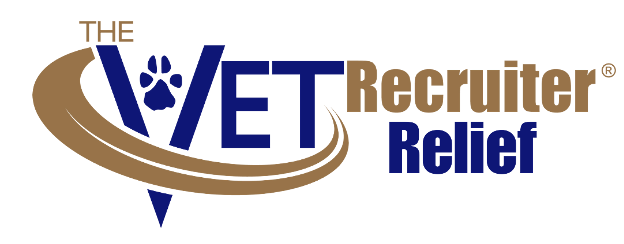Hiring relief veterinarians is an increasingly common practice in the Veterinary industry, driven by the need for flexibility, continuity of care, and support during staff shortages. Relief veterinarians, often referred to as locum veterinarians, fill temporary roles in clinics, hospitals, and other Veterinary practices. These professionals provide coverage for permanent staff during vacations, medical leave, or transitions between full-time hires. Understanding the unique role they play is essential to ensuring a successful hiring process.
Relief veterinarians bring a wealth of experience and adaptability to the practices they serve. Many have worked in diverse clinical settings, enabling them to handle a wide variety of cases. Their role often involves stepping into high-pressure situations with minimal onboarding, making it critical for employers to clearly define expectations and provide adequate support during their tenure. The hiring process should focus on identifying candidates who can seamlessly integrate into the team and uphold the practice’s standards of care. In this article, we will present extensive information about how to hire relief veterinarians.
Identifying the Need for a Relief Veterinarian
The first step in hiring a relief veterinarian is recognizing when their services are necessary. Common scenarios include temporary staff absences due to vacations, maternity leave, or illness. Relief veterinarians are also extremely valuable during periods of increased patient volume, such as holidays or seasonal surges in demand. In addition, they can provide essential coverage when recruiting for a permanent position, ensuring that patient care remains uninterrupted.
Assessing the specific needs of your practice is crucial to determining the scope of the relief veterinarian’s role. Consider factors such as the duration of coverage, the types of cases they will handle, and any specialized skills required. Clearly defining these needs will streamline the hiring process and help attract candidates who are well-suited to the position.
How to Hire Relief Veterinarians: The Job Description
A well-crafted job description is a key component of attracting qualified relief veterinarians. It should provide a clear and concise overview of the role, including the practice’s mission, the scope of responsibilities, and the qualifications required. Begin by introducing your practice, highlighting its values, services, and unique aspects that set it apart. This not only helps candidates determine if they are a good fit but also serves as an opportunity to promote your practice as a desirable place to work.
The job description should specify the expected duties of the relief veterinarian, such as performing wellness exams, diagnosing and treating illnesses, conducting surgeries, and providing client education. Include details about the work environment, such as the size of the team, the types of equipment available, and the pace of the practice. In addition, outline any specific skills or certifications that are required, such as experience with exotic animals or proficiency in certain diagnostic tools.
Transparency about scheduling and compensation is also important. Clearly state the duration of the assignment, the expected hours, and whether on-call duties are involved. Providing a competitive and fair compensation range will help attract top candidates and set clear expectations from the outset.
How to Hire Relief Veterinarians: Sourcing
Once you have a clear understanding of your needs and a compelling job description, the next step is sourcing qualified candidates. There are several effective methods for finding relief veterinarians, including online job boards, staffing agencies, and professional networks. Websites dedicated to Veterinary jobs, such as the American Veterinary Medical Association (AVMA) Career Center, are excellent resources for reaching a broad audience of Veterinary professionals.
Staffing agencies that specialize in Veterinary relief services can also be a valuable resource. These agencies often have extensive networks of pre-screened candidates, saving you time and effort in the hiring process. In addition, attending Veterinary conferences and engaging with professional organizations can help you build connections and identify potential candidates.
Word-of-mouth referrals from colleagues and industry peers can also yield excellent results. Veterinarians who have worked with relief professionals in the past may be able to recommend trusted individuals who can meet your needs. Leveraging multiple sourcing methods will increase your chances of finding a highly qualified relief veterinarian.
How to Hire Relief Veterinarians: Evaluating
Thoroughly evaluating candidates is essential to ensuring a successful hire. Begin by reviewing resumes and cover letters to assess their qualifications, experience, and areas of expertise. Look for evidence of adaptability, strong communication skills, and a commitment to providing high-quality patient care. Candidates with a history of successful relief work are particularly valuable, as they are likely accustomed to quickly integrating into new environments.
Conducting interviews is a critical step in the evaluation process. Use the interview to gain insight into the candidate’s clinical skills, problem-solving abilities, and approach to client communication. Ask about their experiences in relief roles, including any challenges they have faced and how they have addressed them. This will provide valuable information about their ability to navigate the unique demands of temporary assignments.
References are another important component of the evaluation process. Contact previous employers or colleagues to verify the candidate’s credentials and gather feedback about their performance. Pay particular attention to their reliability, professionalism, and ability to work collaboratively with teams.
How to Hire Relief Veterinarians: Onboarding
Effective onboarding is crucial to ensuring a smooth transition for relief veterinarians. While they are experienced professionals, they still require guidance to familiarize themselves with the specifics of your practice. Begin by providing a comprehensive orientation that includes an overview of clinic protocols, software systems, and emergency procedures. Introduce them to the team and outline the expectations for their role.
Providing access to resources, such as a detailed manual or a designated point of contact, can help relief veterinarians navigate their assignments with confidence. Encourage open communication and provide opportunities for them to ask questions or seek clarification. Establishing a supportive environment will not only enhance their performance but also contribute to a positive experience for both the relief veterinarian and your team.
Establishing Clear Communication
Clear and effective communication is essential for the success of any relief veterinarian assignment. Ensure that all team members are aware of the relief veterinarian’s role and responsibilities. This includes sharing their schedule, areas of focus, and any specific tasks they are expected to handle. Transparent communication leads to collaboration and minimizes misunderstandings.
Encourage the relief veterinarian to provide feedback about their experience and any areas where they may need additional support. Regular check-ins can help address potential issues early and ensure that the assignment is progressing smoothly. A collaborative approach to communication will strengthen the relationship between the relief veterinarian and your practice.
How to Hire Relief Veterinarians: Logistics
Hiring relief veterinarians involves managing various logistical and compliance-related considerations. Ensure that the candidate holds a valid license to practice in your state or region and verify their credentials with the appropriate licensing board. Malpractice insurance is another critical factor; some relief veterinarians carry their own coverage, while others may require the practice to provide it.
Discussing and formalizing the terms of the assignment in a written agreement is highly recommended. This should include details about compensation, scheduling, responsibilities, and any specific expectations for the role. A clear and comprehensive agreement helps prevent misunderstandings and provides a reference point for both parties.
Logistics such as travel and lodging arrangements should also be addressed, particularly if the relief veterinarian is coming from outside the local area. Providing support with these arrangements can make your practice more attractive to potential candidates and ensure a positive experience for everyone involved.
Retaining Strong Relationships with Relief Veterinarians
Building and maintaining strong relationships with relief veterinarians can benefit your practice in the long term. Positive experiences often lead to repeat assignments, creating a reliable pool of professionals you can call upon when needed. Show appreciation for their contributions by providing constructive feedback, expressing gratitude, and ensuring prompt payment for their services.
Creating a welcoming and respectful environment will encourage relief veterinarians to view your practice as a preferred employer. Over time, these relationships can enhance the quality and continuity of care your practice provides, even during periods of staffing challenges.
How to Hire Relief Veterinarians in the Future
Hiring relief veterinarians is an effective solution for maintaining high standards of care during staff shortages and periods of increased demand. By understanding the role of relief professionals, crafting compelling job descriptions, and employing strategic sourcing methods, practices can attract highly qualified candidates.
Thorough evaluation, effective onboarding, and clear communication are essential to ensuring a successful hire and a positive experience for all parties involved. With careful planning and attention to detail, relief veterinarians can become a valuable resource, supporting the needs of your practice while delivering exceptional care to your patients.

